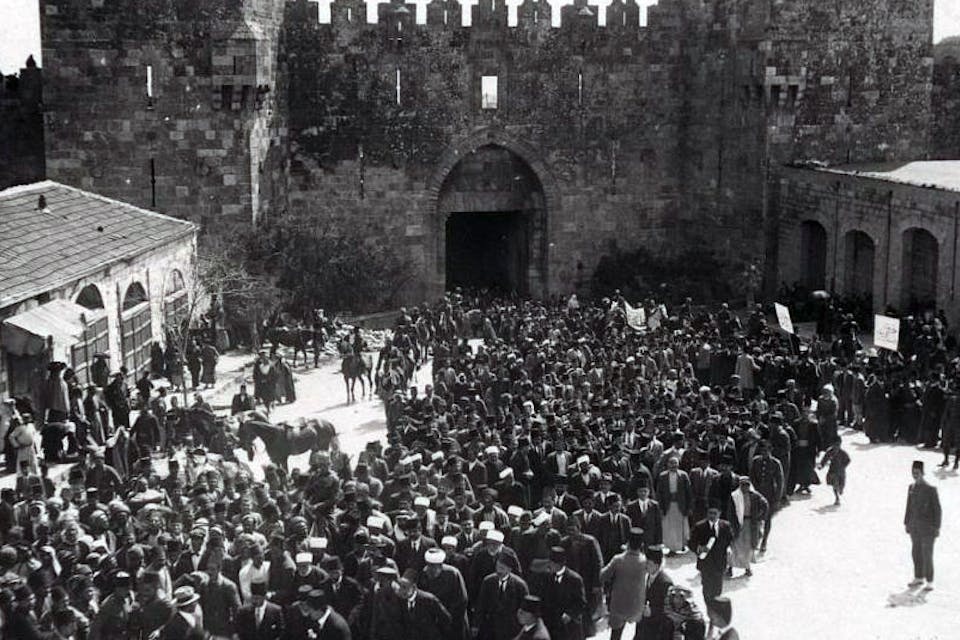
April 14, 2020
Century-Old Lessons from a Jerusalem Pogrom
The Nebi Musa riots, which happened 100 years ago last week, killed five Jews, injured hundreds, and set a pattern for decades of anti-Jewish antagonism.
For Jews, the month of April is so crowded with anniversaries—from the Exodus from Egypt to the Warsaw Ghetto uprising—that it’s easy to miss one, especially this year, with the coronavirus pandemic sucking up so much attention. But even were this not so, one might be forgiven for having overlooked the hundredth anniversary, on April 4, of the outbreak of the Nebi Musa riots in Jerusalem. Named for the Muslim festival memorializing the birth of Moses on which they began, the riots left five Jews dead, 211 injured, and at least two women raped.
With a century’s distance, it is apparent that much remains unchanged about Arab antagonism against the Jews. In attending to the political interests served by the riots, the way in which they were instigated, and their aftermath, we can see similar elements of anti-Jewish strategy that have been deployed ever since. My purpose in marking this centenary is not to provide a dispassionate recapitulation of the events, but to offer the affair’s history as context for today’s defenders of Israel so that they may identify recurring patterns in the behavior of their adversaries.
To understand this episode, we must first put it in its proper context. The land on the eastern coast of the Mediterranean had belonged to the Ottoman empire until its dissolution during World War I. Planning ahead in November 1917 for the aftermath of the war, the British government issued the Balfour Declaration, which called for “the establishment in Palestine”—then but a vaguely defined geographic area—“of a national home for the Jewish people.”